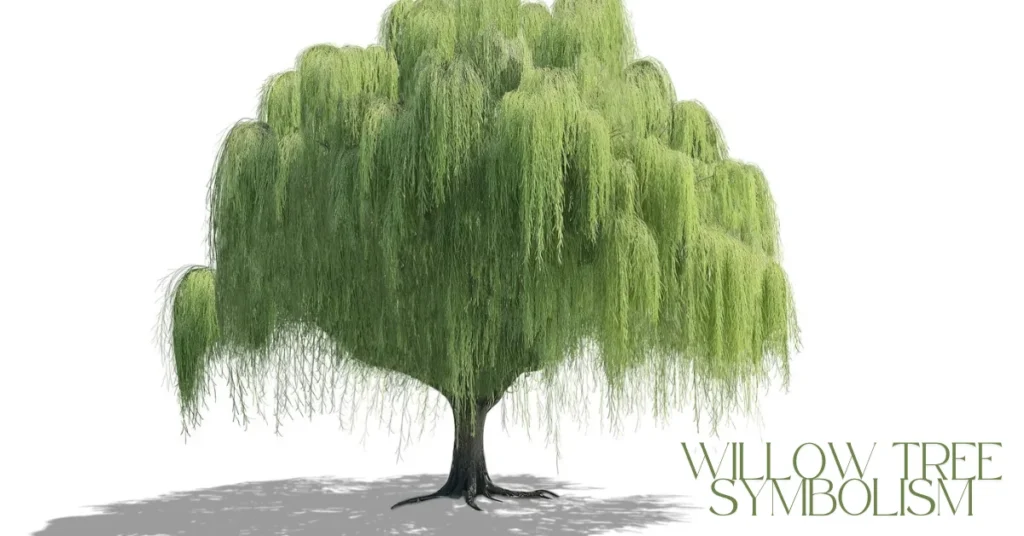Introduction to Willow Trees
Willow trees have long captivated the hearts and minds of people around the world. With their graceful, sweeping branches and delicate leaves, they evoke a sense of peace and tranquility. But willow tree symbolism beyond their beauty lies a rich tapestry of symbolism deeply rooted in both Celtic and Native American traditions. These majestic trees are not just beautiful components of our landscapes; they hold profound meanings that resonate with themes of resilience, healing, and spirituality.
As we explore willow tree symbolism, you’ll discover how these magnificent beings have inspired stories, rituals, and even personal growth across cultures. Whether you’re drawn to them for their aesthetic appeal or curious about their deeper significance, willow trees offer wisdom worth embracing. Let’s delve into the cultural significance behind this extraordinary tree!
The Cultural Significance of Willow Trees in Celtic Traditions
Willow trees hold a special place in Celtic culture, often symbolizing resilience and adaptability. These elegant trees were believed to connect the earthly realm with the spiritual world.
In Celtic mythology, willows are associated with several deities. They represent intuition and wisdom. Their branches, flexible yet strong, embody the ability to bend without breaking—an important lesson for life.
During rituals, Celts used willow twigs for their protective qualities. The tree was thought to guard against negative energies while inviting positive influences into one’s life.
The sight of willow groves inspired creativity among poets and artisans alike. Many sought refuge beneath these graceful canopies to unlock their imagination.
The presence of willow trees in Celtic traditions serves as a reminder of nature’s profound influence on spirituality and artistic expression.
Symbolism of Willow Trees in Native American Cultures
Willow trees hold a special place in Native American cultures, symbolizing flexibility and adaptability. These trees thrive near water, representing the connection between land and spirit.
Different tribes view willows as sacred. They often use willow branches for rituals, weaving them into baskets or making ceremonial items. This practice showcases their resourcefulness and respect for nature.
In many stories, willows are associated with healing and protection. The bark of the willow contains salicin, which is known for its medicinal properties. This further emphasizes the tree’s role in nurturing both body and soul.
Moreover, some tribes believe that sitting under a willow can inspire dreams or visions. It serves as a bridge to communicate with ancestors and spirits, deepening their spiritual journey through life’s challenges.
The Spiritual Meaning of Willow Trees
Willow trees hold deep spiritual meaning in various cultures. Often associated with intuition and insight, these graceful beings invite us to explore our inner selves. Their drooping branches seem to whisper secrets of the universe.
In many traditions, willows symbolize connection between the earthly realm and the spirit world. They remind us that life is a cycle—growth, decay, and renewal intertwine beautifully. This cyclical nature encourages acceptance of change.
Moreover, willow trees are known for their flexibility. This adaptability teaches resilience amid adversity. By bending without breaking, they inspire us to navigate life’s challenges with grace.
The tranquil presence of a willow can foster meditation and reflection. Sitting beneath its canopy offers solace during times of turmoil or uncertainty. In this sacred space, one can seek clarity and emotional healing while feeling grounded by nature’s embrace.
Healing Properties and Uses of Willow Trees
Willow trees are more than just beautiful natural wonders. They have been revered for their healing properties across various cultures.
The bark of the willow contains salicin, a compound similar to aspirin. This has made it invaluable in traditional medicine for pain relief and inflammation. Many herbalists utilize willow bark tea as a natural remedy for headaches and muscle aches.
Moreover, the tree’s flexible branches symbolize adaptability and resilience. This quality is often harnessed in rituals aimed at emotional healing and stress relief.
Incorporating willow into your environment can enhance tranquility. Some people create wreaths or use its wood in crafts to invite serenity into their homes.
Willow’s gentle energy encourages introspection, making it an ideal companion during meditation practices. It serves as a reminder of nature’s ability to mend both body and soul through its soothing presence.
How to Incorporate Willow Tree Symbolism into Daily Life?
Incorporating willow tree symbolism into your daily life can be a beautiful journey of mindfulness and connection. Start by embracing the qualities of flexibility and resilience that the willow embodies. When faced with challenges, remind yourself to bend rather than break.
You can decorate your space with willow-themed art or plants. A small potted willow is not only visually appealing but also serves as a daily reminder of strength in adversity.
Journaling is another way to connect with this symbolism. Write about moments when you’ve shown adaptability or how you’ve found peace during turbulent times. Let these reflections encourage personal growth.
Consider making herbal teas from willows or using their bark for natural remedies, tapping into their healing properties. Engaging in nature walks under actual willow trees fosters tranquility and inspires gratitude for life’s ebb and flow.
Conclusion: Embracing the Wisdom and Resilience of the Willow Tree
The willow tree stands as a powerful symbol across various cultures, particularly in Celtic and Native American traditions. Its graceful branches and ability to thrive in diverse environments make it an enduring emblem of adaptability and strength.
Celtic lore often associates the willow with intuition, dreams, and the connection between worlds. It serves as a bridge between the physical realm and spiritual existence. Meanwhile, Native American cultures regard the willow as a source of healing and resilience, emphasizing its role in nurturing both body and spirit.
Embracing the wisdom inherent in these trees can enrich our lives significantly. By recognizing their symbolism—flexibility amidst challenges or deep emotional insight—we can draw inspiration from their presence. The willow encourages us to bend rather than break when faced with adversity.
Incorporating elements of willow tree symbolism into daily life may be simple yet profound. Consider surrounding yourself with images or items inspired by willows—a painting or even incorporating them into your garden design could create a calming, reflective space.
As we navigate life’s complexities, letting the essence of the willow guide us can foster growth within ourselves. Whether through meditation on its significance or simply appreciating its beauty during walks outdoors, we tap into ancient wisdom that transcends time.
By fostering this connection to nature’s resilient symbol—the mighty yet gentle willow—we allow ourselves room for personal growth while honoring rich cultural histories intertwined with this magnificent tree.
ALSO READ: Elizabeth Bowes Gregory: A Legacy of Innovation
FAQs
What is willow tree symbolism?
Willow tree symbolism represents wisdom, intuition, resilience, and deep spiritual insight across various cultures and traditions.
Why is the willow tree sacred in Celtic traditions?
The Celts revered the willow for its connection to water, the moon, and its ability to enhance intuition and spiritual awareness.
What does the willow tree represent in Native American culture?
It symbolizes strength in old age, deep wisdom, and open-mindedness, offering guidance through life’s challenges.
How is the willow tree linked to astrology?
In Celtic astrology, those born between April 15 and May 12 are associated with the willow tree, symbolizing intelligence and creativity.
What does the willow tree mean in Chinese culture?
In China, the willow symbolizes grace, flexibility, and the ability to overcome hardship while maintaining inner strength.







